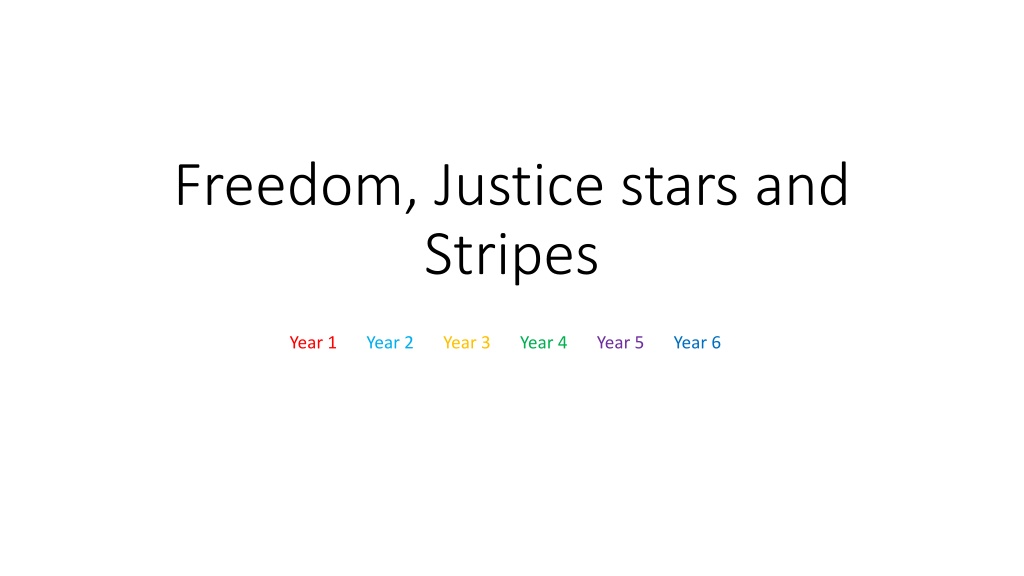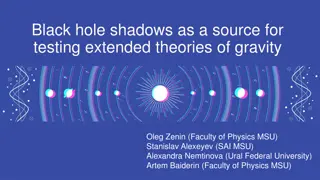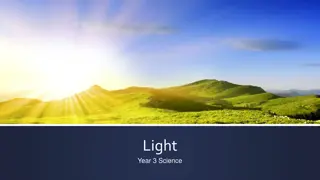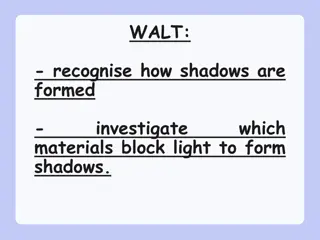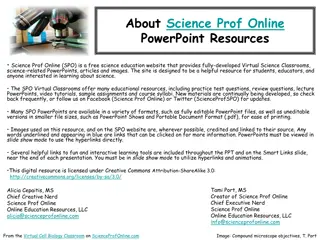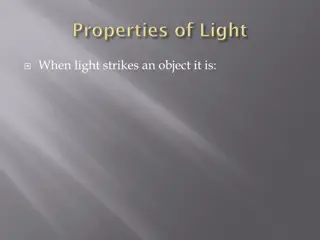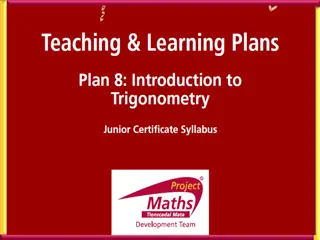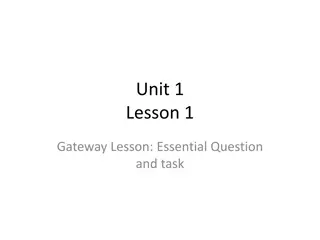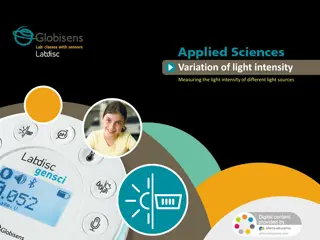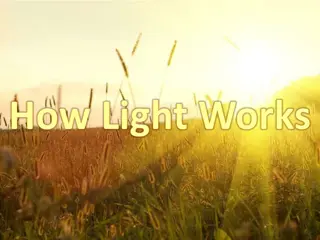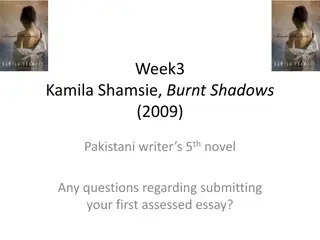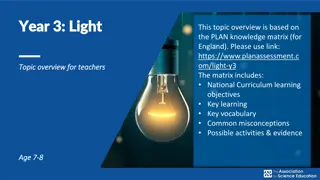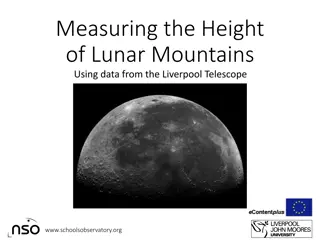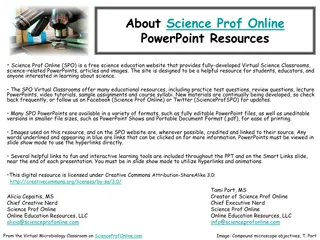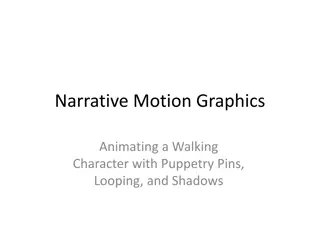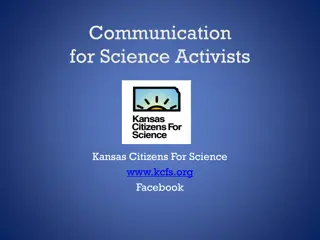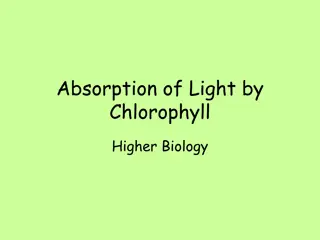Understanding Light and Shadows in Science Education
Explore the fascinating world of light and shadows in science education, focusing on concepts such as light traveling in straight lines, reflections, shadows formation, and the importance of light for seeing objects. This comprehensive guide covers various aspects of observing, measuring, recording data, making predictions, and conducting comparative tests in the context of Year 1 to Year 5 science curriculum. Discover how to use simple scientific equipment, collect data, analyze results, and communicate findings effectively.
Uploaded on Sep 16, 2024 | 0 Views
Download Presentation

Please find below an Image/Link to download the presentation.
The content on the website is provided AS IS for your information and personal use only. It may not be sold, licensed, or shared on other websites without obtaining consent from the author. Download presentation by click this link. If you encounter any issues during the download, it is possible that the publisher has removed the file from their server.
E N D
Presentation Transcript
Freedom, Justice stars and Stripes Year 1 Year 2 Year 3 Year 4 Year 5 Year 6
Freedom, Justice, Stars and Stripes Science - Light Use simple equipment to observe closely (Year 1 focus) Take measurements, using a range of scientific equipment, with increasing accuracy and precision, taking repeat readings when appropriate (Year 5 focus) Make systematic and careful observations and, where appropriate, take accurate measurements using standard units, using a range of equipment, including thermometers and data loggers (Year 4 focus) Recognise that light appears to travel in straight lines Recognise that shadows are formed when the light from a light source is blocked by a solid object Gather and record data to help in answering questions (Year 1 focus)) Use the idea that light travels in straight lines to explain that objects are seen because they give out or reflect light into the eye Gather and record data to help in answering questions including from secondary sources of information (Year 2 focus) Use test results to make predictions to set up further comparative and fair tests (Year 5 focus) Recognise that he/she needs light in order to see things and that dark is the absence of light Gather, record, classify and present data in a variety of ways to help in answering questions (Year 4 focus) Explain that we see things because light travels from light sources to our eyes or from light sources to objects and then to our eyes Use simple equipment to observe closely including changes over time (Year 2 focus) Record data and results of increasing complexity using scientific diagrams and labels, classification keys, tables, scatter graphs, bar and line graphs (Year 5 focus) Notice that light is reflected from surfaces Use results to draw simple conclusions, make predictions for new values, suggest improvements and raise further questions (Year 4 focus) Find patterns in the way that the size of shadows change Communicate his/her ideas, what he/she does and what he/she finds out in a variety of ways Use the idea that light travels in straight lines to explain why shadows have the same shape as the objects that cast them Use straightforward scientific evidence to answer questions or to support his/her findings (Year 4 focus) Identify scientific evidence that has been used to support or refute ideas or arguments (Year 5 focus) Recognise that light from the sun can be dangerous and that there are ways to protect eyes Perform simple comparative tests (Year 2 focus)
Freedom, Justice, Stars and Stripes Compare the physical and human features of a region of the UK and a region in North America, identifying similarities and differences Use locational and directional language (e.g. near and far; left and right) to describe the location of features and routes Identify the physical characteristics and key topographical features of the countries within North America Recognise the different shapes of countries Ask simple geographical questions e.g. What is it like to live in this place? Use maps, atlases, globes and digital/computer mapping to locate countries and describe features studied Name and locate the world's seven continents and five oceans Geography Locate the world's countries, using maps to focus on Europe (including the location of Russia) and North and South America, concentrating on their environmental regions, key physical and human characteristics, countries, and major cities Use simple compass directions (North, South, East and West) and locational and directional language e.g. near and far; left and right, to describe the location of features and routes on a map Recognise the different shapes of continents Develop an awareness of how places relate to each other Understand geographical similarities and differences through the study of human and physical geography of a region of the United Kingdom, a region in a European country, and a region within North or South America Use and interpret maps, globes, atlases and digital / computer mapping to locate countries and key features Recognise that people have differing quality of life living in different locations and environments Analyse evidence and draw conclusions e.g. make comparisons between locations using aerial photos/pictures e.g. population, temperatures etc. Understand why there are similarities and differences between places
Present findings and communicate knowledge and understanding in different ways Place known events and objects in chronological order Evaluate the usefulness of a variety of sources Relate his/her own account of an event and understand that others may give a different version Find answers to some simple questions about the past from simple sources of information Freedom, Justice, Stars and Stripes Make comparisons between aspects of periods of history and the present day Provide an account of a historical event based on more than one source Ask and answer relevant basic questions about the past Give some reasons for some important historical events Understand how our knowledge of the past is constructed from a range of sources Discuss the lives of significant individuals in the past who have contributed to national and international achievements and use some to compare aspects of life in different periods e.g. Elizabeth I and Queen Victoria, Christopher Columbus and Neil Armstrong, William Caxton and Tim Berners- Lee, Pieter Bruegel the Elder and LS Lowry, Rosa Parks and Emily Davison, Mary Seacole and/or Florence Nightingale and Edith Cavell Ask and answer questions, choosing and using parts of stories and other sources to show that he/she knows and understands key features of events History Construct informed responses that involve thoughtful selection and organisation of relevant historical information Use a variety of resources to find out about aspects of life in the past Place some historical periods in a chronological framework Describe where the people and events studied fit within a chronological framework and identify similarities and differences between ways of life in different periods Address and sometimes devise historically valid questions about change, cause, similarity and difference, and significance Use sources of information in ways that go beyond simple observations to answer questions about the past Understand that sources can contradict each other Speak about how he/she has found out about the past Use an increasing range of common words and phrases relating to the passing of time Note connections, contrasts and trends over time and show developing appropriate use of historical terms Communicate his/her learning in an organised and structured way, using appropriate terminology Describe memories of key events in his/her life using historical vocabulary
Computing Freedom, Justice, Stars and Stripes With support select, use and combine a variety of software on a range of digital devices to accomplish given goals Use technology purposefully to create digital content Recognise common uses of information technology in the home and school environment Independently select and use appropriate software for a task Use technology purposefully to create, organise, store, manipulate and retrieve digital content Independently select, use and combine a variety of software to design and create content for a given audience Use technology purposefully to create digital content comparing the benefits of different programs Independently select, use and combine a variety of software to design and create content for a given audience, including collecting, analysing, evaluating and presenting data and information With support select and use a variety of software to accomplish goals Use simple search technologies Independently select, use and combine a variety of software to collect, analyse, evaluate and present data and information With support select and use a variety of software on a range of digital devices
Freedom, Justice, Stars and Stripes Research and discuss various artists, architects and designers and discuss their processes and explain how these were used in the finished product Explain what he/she likes about the work of others Experiment with using layers and overlays to create new colours/textures Explore mark-making using a variety of tools Make marks in print using found objects and basic tools and use these to create repeating patterns Create intricate printing patterns by simplifying and modifying sketchbook designs Art and Design Give reasons for his/her preferences when looking at art/craft or design work Adapt his/her own final work following feedback or discussion based on their preparatory ideas Use a variety of techniques including carbon printing, relief, press and fabric printing and rubbings Try out different activities and make sensible choices about what to do next Use taught technical skills to adapt and improve his/her work Explain what he/she likes or dislikes about their work Follow a design brief to achieve an effect for a particular function Create printing blocks using relief or impressed techniques Print on fabrics using tie-dyes or batik Experiment with different materials to create a range of effects and use these techniques in the completed piece of work Articulate how he/she might improve their work using technical terms and reasons as a matter of routine
